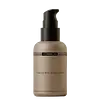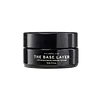What's inside
What's inside
 Key Ingredients
Key Ingredients

 Benefits
Benefits

 Concerns
Concerns

 Ingredients Side-by-side
Ingredients Side-by-side

Water
Skin ConditioningPentylene Glycol
Skin ConditioningEthylhexyl Olivate
Skin ConditioningPolyglyceryl-2 Stearate
EmulsifyingGlyceryl Stearate
EmollientGlycerin
HumectantStearyl Alcohol
EmollientCaprylyl Glycol
EmollientCarbomer
Emulsion StabilisingSqualane
EmollientCaprylhydroxamic Acid
Xanthan Gum
EmulsifyingAllantoin
Skin ConditioningSclerotium Gum
Emulsion StabilisingPhytic Acid
Lecithin
EmollientPullulan
Sodium Lauroyl Lactylate
EmulsifyingSodium Hyaluronate
HumectantAloe Barbadensis Leaf Juice
Skin ConditioningCeramide NP
Skin ConditioningCholesterol
EmollientCeramide AP
Skin ConditioningPhytosphingosine
Skin ConditioningCeramide EOP
Skin ConditioningWater, Pentylene Glycol, Ethylhexyl Olivate, Polyglyceryl-2 Stearate, Glyceryl Stearate, Glycerin, Stearyl Alcohol, Caprylyl Glycol, Carbomer, Squalane, Caprylhydroxamic Acid, Xanthan Gum, Allantoin, Sclerotium Gum, Phytic Acid, Lecithin, Pullulan, Sodium Lauroyl Lactylate, Sodium Hyaluronate, Aloe Barbadensis Leaf Juice, Ceramide NP, Cholesterol, Ceramide AP, Phytosphingosine, Ceramide EOP
Sea Silt Extract
Skin ConditioningCetearyl Alcohol
EmollientGlycerin
HumectantSqualane
EmollientCaprylic/Capric Triglyceride
MaskingOctyldodecanol
EmollientGlyceryl Stearate Citrate
EmollientHelianthus Annuus Seed Oil Unsaponifiables
EmollientWater
Skin ConditioningMicrocrystalline Cellulose
AbsorbentAvena Sativa Kernel Extract
AbrasivePlatonia Insignis Seed Butter
EmollientGluconolactone
Skin ConditioningSaccharide Isomerate
HumectantSodium Stearoyl Glutamate
CleansingBuddleja Davidii Meristem Cell Culture
Skin ConditioningPotassium Sorbate
PreservativeBenzyl Alcohol
PerfumingCellulose Gum
Emulsion StabilisingGlyceryl Caprylate
EmollientXanthan Gum
EmulsifyingSodium Benzoate
MaskingMaltodextrin
AbsorbentEpilobium Angustifolium Extract
Skin ConditioningAchillea Millefolium Extract
CleansingUrtica Dioica Extract
AstringentPropanediol
SolventTremella Fuciformis Polysaccharide
Emulsion StabilisingCaesalpinia Spinosa Fruit Extract
Skin ProtectingCalcium Gluconate
HumectantSucrose
HumectantCitronellol
PerfumingSodium Citrate
BufferingCitric Acid
BufferingKappaphycus Alvarezii Extract
Skin ConditioningCaesalpinia Spinosa Fruit Pod Extract
Tephrosia Purpurea Seed Extract
Skin ConditioningPlankton Extract
Skin ConditioningVerbascum Thapsus Extract
Skin ConditioningTabebuia Impetiginosa Bark Extract
Skin ConditioningGlycyrrhiza Glabra Root Extract
BleachingHelichrysum Arenarium Flower Extract
Skin ConditioningCamellia Sinensis Leaf Extract
AntimicrobialLecithin
EmollientHelianthus Annuus Sprout Extract
Skin ConditioningTocopherol
AntioxidantTriethyl Citrate
MaskingDimethylheptenal
PerfumingElettaria Cardamomum Seed Oil
MaskingJuniperus Communis Fruit Oil
MaskingJuniperus Virginiana Oil
MaskingMichelia Alba Leaf Oil
MaskingPelargonium Graveolens Flower Oil
MaskingVetiveria Zizanoides Root Extract
PerfumingSea Silt Extract, Cetearyl Alcohol, Glycerin, Squalane, Caprylic/Capric Triglyceride, Octyldodecanol, Glyceryl Stearate Citrate, Helianthus Annuus Seed Oil Unsaponifiables, Water, Microcrystalline Cellulose, Avena Sativa Kernel Extract, Platonia Insignis Seed Butter, Gluconolactone, Saccharide Isomerate, Sodium Stearoyl Glutamate, Buddleja Davidii Meristem Cell Culture, Potassium Sorbate, Benzyl Alcohol, Cellulose Gum, Glyceryl Caprylate, Xanthan Gum, Sodium Benzoate, Maltodextrin, Epilobium Angustifolium Extract, Achillea Millefolium Extract, Urtica Dioica Extract, Propanediol, Tremella Fuciformis Polysaccharide, Caesalpinia Spinosa Fruit Extract, Calcium Gluconate, Sucrose, Citronellol, Sodium Citrate, Citric Acid, Kappaphycus Alvarezii Extract, Caesalpinia Spinosa Fruit Pod Extract, Tephrosia Purpurea Seed Extract, Plankton Extract, Verbascum Thapsus Extract, Tabebuia Impetiginosa Bark Extract, Glycyrrhiza Glabra Root Extract, Helichrysum Arenarium Flower Extract, Camellia Sinensis Leaf Extract, Lecithin, Helianthus Annuus Sprout Extract, Tocopherol, Triethyl Citrate, Dimethylheptenal, Elettaria Cardamomum Seed Oil, Juniperus Communis Fruit Oil, Juniperus Virginiana Oil, Michelia Alba Leaf Oil, Pelargonium Graveolens Flower Oil, Vetiveria Zizanoides Root Extract
Ingredients Explained
These ingredients are found in both products.
Ingredients higher up in an ingredient list are typically present in a larger amount.
Glycerin is already naturally found in your skin. It helps moisturize and protect your skin.
A study from 2016 found glycerin to be more effective as a humectant than AHAs and hyaluronic acid.
As a humectant, it helps the skin stay hydrated by pulling moisture to your skin. The low molecular weight of glycerin allows it to pull moisture into the deeper layers of your skin.
Hydrated skin improves your skin barrier; Your skin barrier helps protect against irritants and bacteria.
Glycerin has also been found to have antimicrobial and antiviral properties. Due to these properties, glycerin is often used in wound and burn treatments.
In cosmetics, glycerin is usually derived from plants such as soybean or palm. However, it can also be sourced from animals, such as tallow or animal fat.
This ingredient is organic, colorless, odorless, and non-toxic.
Glycerin is the name for this ingredient in American English. British English uses Glycerol/Glycerine.
Learn more about GlycerinLecithin is a term for a group of substances found in the cell membranes of plants, animals, and humans. They are made up of mixture of phospholipids.
This ingredient has emollient and emulsifying properties.
As an emollient, lecithen helps soften the skin and creates a barrier to keep moisture in.
As an emulsifier, it also helps prevent water and oil ingredients from separating. Lecithin can also help ingredients be better absorbed by the skin.
This is because the phospholipids in lecithin produce liposomes. Liposomes help other ingredients get through the skin barrier.
Depending on the source of this ingredient, lecithin may not be fungal acne safe. This is because some sources of lecithin come from soybean oil, which may feed the malassezia yeast that feeds fungal acne.
We recommend reaching out to the brand you are purchasing from to inquire about the source of their lecithin.
Some other names for this ingredient include soy lecithin and deoiled soy lecithin.
Learn more about LecithinSqualane is an emollient that helps the skin hold onto moisture. It's an oily liquid that occurs naturally in certain types of fish and plant oils.
Because squalane boosts hydration in the skin, it also comes with plenty of benefits: it is an antioxidant and can help fight free radicals and skin damage. Squalane is also found to have a detoxifying effect when applied.
Squalane comes from squalene, which occurs naturally within the sebum of our skin. It is one of the oils our skin produces to keep itself hydrated. Squalane is the hydrogenated version of squalene and has a longer shelf life.
Research shows that squalane is non-irritating (even at 100% concentration).
In general, it's a fantastic ingredient. It does a great job at hydrating the skin, and it's suitable for those with sensitive skin.
The source of squalane may impact malassezia / fungal acne. This is because olive oil derived squalane can contain impurities such as fatty acids and plant waxes. Sugarcane derived squalane is recommended for anyone with malassezia concerns.
Is squalane vegan?
This depends on the source. Squalane can be derived from both plants and animals. Most squalane used in skincare comes from plants.
Please note: the source of squalane is only known if disclosed by the brand. We recommend reaching out to the brand if you have any questions about their squalane.
Read more about squalene with an "e".
Is squalane an oil?
Squalane is often called an oil, but it’s technically not; it’s a hydrocarbon, meaning it’s only made of carbon and hydrogen, unlike true oils which are triglycerides made of fatty acids and glycerol.
The term “oil-free” isn’t regulated, so companies can define it however they want. Some exclude all oils, while others just avoid mineral oil or comedogenic oils.
While some people avoid oils thinking they cause breakouts, the right kind of oil (or oil-like ingredient like squalane) can actually help balance and hydrate your skin. It’s worth testing out simple oils or squalane to see what works best for your skin.
Learn more about SqualaneWater. It's the most common cosmetic ingredient of all. You'll usually see it at the top of ingredient lists, meaning that it makes up the largest part of the product.
So why is it so popular? Water most often acts as a solvent - this means that it helps dissolve other ingredients into the formulation.
You'll also recognize water as that liquid we all need to stay alive. If you see this, drink a glass of water. Stay hydrated!
Learn more about WaterXanthan gum is used as a stabilizer and thickener within cosmetic products. It helps give products a sticky, thick feeling - preventing them from being too runny.
On the technical side of things, xanthan gum is a polysaccharide - a combination consisting of multiple sugar molecules bonded together.
Xanthan gum is a pretty common and great ingredient. It is a natural, non-toxic, non-irritating ingredient that is also commonly used in food products.
Learn more about Xanthan Gum